
What I know about the rise and risks of me-too brands, and the power of a brand differentiation strategy to set your brand apart…
Failure to differentiate could very well sound the death knell for your brand. If you want to learn about the rise of “me too” brands, the risks of brand imitation, the benefits of brand differentiation, as well as strategies for successful brand differentiation, here is your ultimate guide.
Table of Contents
- Introduction: The Changing Landscape of Brand Competition
- 1. Understanding the “Me Too” Phenomenon
- 2. The Risks of Being a “Me Too” Brand
- 3. The Importance of Brand Differentiation
- 4. Strategies for Successful Brand Differentiation
- Identify and leverage unique brand attributes
- Develop a compelling brand story and value proposition
- Innovate and create unique products or services
- Emphasise exceptional customer experience
- Personalise marketing efforts and build authentic relationships
- Monitor and adapt to market trends and consumer needs
- 5. Case Studies: Successful Examples of Brand Differentiation
- Aesop: Luxury skincare with a focus on simplicity and quality
- Allbirds: Sustainable footwear with merino wool and recycled materials
- Icebreaker: Merino wool outdoor apparel with a focus on sustainability
- Lush: Handmade cosmetics with a focus on ethical sourcing and activism
- Bellroy: Innovative, slim-profile wallets and accessories
- Rent the Runway: Fashion rental service for special occasions
- Apple: The art of innovation and design
- Tesla: Revolutionising the automotive industry
- TLDR

Introduction: The Changing Landscape of Brand Competition
Incrementalism
As business owners we tend to take for granted what we do. When we’re asked what makes us unique we might say, “We have better customer service” or “Our product is much better quality” or we have a “New improved formula!”
But when you critically examine these statements with a truly objective eye, you realise it’s nothing more than incrementalism. Increments do not give people enough of a reason to choose you. It’s the differences that give people a reason to choose you.
Marketing and positioning experts Al Ries and Jack Trout wrote in their seminal 1981 book, Positioning: The Battle for Your Mind…
“Differentiation is one of the most important strategic and tactical activities in which companies must engage. What makes you different makes you better. Being better is not enough. You can’t just be better, you must be different. Giving customers a reason to choose you over the competition is the number one rule of marketing.”
This influential book highlighted the importance of differentiation and carving out a distinct position in the customer’s mind. It also highlighted the dangers of just trying to be incrementally better than competitors on common attributes.
The pithy quote, “It’s better to be different than it is to be better” nicely encapsulates one of the key messages of positioning theory that Ries and Trout espoused – the need to separate yourself from the competition and not rely on incremental improvements alone.
“It’s better to be different than it is to be better” has become an oft-cited mantra in the marketing world when discussing brand differentiation strategy.
The rise of “me too” brands
Brand competition has undergone a profound transformation since Ries and Trout published their book. Gone are the days when your brand could rely solely on its product or service to capture consumer attention and loyalty. Today’s brands face a new phenomenon: the rise of “me too” brands.
“Me too” brands, motivated by the success of better brands, mimic their every move. But imitation poses major risks that hinder long-term success.
The importance of brand differentiation
In a crowded marketplace, brand differentiation is crucial. By carving out a distinct identity, your brand can stand out amidst the sea of sameness and capture attention.
In his book Purple Cow: Transform Your Business by Being Remarkable, author Seth Godin highlighted the declining power of traditional marketing and the need to create remarkable products and experiences. Godin wrote…
“Safe is risky. The hardest part is letting go of what’s worked before and embracing new ways of connecting with consumers.”
The purpose of this article
This article will shed light on the risks of being a “me too” brand and highlight the benefits of brand differentiation. You will gain valuable insights into the power of establishing a brand identity that sets your brand apart.

1. Understanding the “Me Too” Phenomenon
Definition of “me too” brands
“Me too” brands are brands or businesses that imitate the offerings, aesthetics and strategies of successful brands in an attempt to profit from their achievements.
These “me too” brands lack originality. Instead, they rely on mimicking the external characteristics of established brands, hoping to profit from their reputation and consumer loyalty.
Characteristics of “me too” brands
“Me too” brands will typically adopt a similar look and feel, packaging designs, and even marketing strategies to the brands they are imitating.
Their goal is to create an association with the successful brand in customers’ minds. The aim is to capitalise on the positive associations and recognition the successful brand has already established.
The “me too” strategy is to piggyback on the success of another brand rather than invest in developing a unique identity.
Examples of “me too” brands
Examples of “me too” brands can be found across most, if not all, industries. In the tech world, numerous smartphone manufacturers have attempted to replicate the sleek design and user experience of Apple’s iPhone. The result is a sea of similar-looking devices.
In the fashion industry, fast-fashion retailers often mimic high-end designer styles. They release cheaper replicas to capture the attention of budget-conscious consumers who want to wear the latest trend.
The allure and short-term benefits of imitating successful brands
The allure of imitating successful brands lies in the perception that if it works for them, it can work for you.
By imitating a successful brand, “me too” businesses believe they can tap into the existing consumer demand and loyalty. And they believe they can do it without having to invest much in research, development and brand building.
In the short term, this strategy can yield some benefits, such as initial sales spikes. However, relying on imitation often leads to stagnant growth and missed opportunities for long-term success.
The dangers of becoming lost in a sea of similarity
The biggest risk faced by “me too” brands is becoming lost in a sea of similarity. As more businesses jump on the bandwagon and imitate successful brands, the marketplace becomes overcrowded with indistinguishable options.
Consumers, in turn, become overwhelmed by choice and may gravitate toward the original brand that started the trend. Others will seek out brands that offer unique value propositions.
By imitating successful brands, “me too” businesses also lose the opportunity to establish their own distinct identity. They fail to differentiate themselves from competitors.
This lack of differentiation often leads to a lack of customer loyalty. When consumers struggle to identify any significant reasons to choose one “me too” brand over another, there is no loyalty.
In the long run, the lack of a unique selling proposition can hinder growth, hinder customer retention and limit the potential for sustained success.
Understanding the “me too” phenomenon is critical for brands seeking long-term success in a crowded marketplace.
By recognising the dangers of imitation, businesses can focus on establishing their own unique identity, offering customers something truly distinctive.
Marketing gurus Al Ries and Jack Trout highlighted the risks of failing to differentiate in their seminal book Positioning: The Battle for Your Mind, writing…
“You can’t just be better, you must be different. What makes you different makes you better.”
Imagine a new car stereo with a volume that goes up to 11. It’s better than 10, but it’s not different. It’s nothing more than incrementalism, and it won’t move the sales needle one jot.
Now imagine a new car stereo with a volume that goes up to 100. That’s 10x better. It’s so much better, in fact, that it now qualifies as “different”. It’s so loud it will crack windows and induce deafness at full volume. Every antisocial young man will lust after one and sales will go through the roof.
In the following sections, we will explore the importance of brand differentiation. And we’ll explore strategies to help you break free of the “me too” cycle and thrive in a competitive landscape.

2. The Risks of Being a “Me Too” Brand
Loss of brand identity and consumer loyalty
By imitating successful brands, businesses fail to establish their own unique voice, values and offerings. This lack of originality makes it difficult for consumers to form a genuine connection or develop loyalty towards the brand.
Instead, they may gravitate towards the original brand that started the trend, as it represents authenticity and a clear brand identity.
As a result, “me too” brands struggle to build a loyal customer base and often face challenges in sustaining long-term success.
Increased price sensitivity and reduced profit margins
When multiple brands offer similar products or services, consumers tend to focus on price as a deciding factor.
In such a competitive environment, “me too” brands are often forced to engage in price wars to attract customers, leading to reduced profit margins.
Without a unique value proposition, these brands struggle to justify higher prices, resulting in a constant race to the bottom.
This downward pressure on prices limits profitability and hinders your ability to invest in innovation, marketing and customer experience.
Limited growth opportunities and market saturation
As more businesses imitate successful brands, the market becomes overcrowded with similar offerings, making it difficult for “me too” brands to stand out.
With limited differentiation comes limited growth opportunities. The “me too” brands struggle to capture new customers or expand their market share.
The lack of distinctiveness also limits your ability to enter new market segments or explore untapped opportunities. As a result, growth becomes stagnant, and “me too” brands find themselves confined to a narrow market niche.
Vulnerability to disruptive competitors
“Me too” brands are particularly vulnerable to disruptive competitors. A disruptive competitor is a brand that introduces innovative and unique solutions, challenging the status quo and capturing market share. Think Tesla.
By lacking differentiation, “me too” brands become easy targets for these disruptors, who offer something genuinely new and compelling.
The presence of disruptive competitors can quickly erode the market share of “me too” brands, leaving them struggling to regain relevance or sustain their business.
You can see this playing out right now in the automotive industry with Tesla disrupting all the “me too” car manufacturers.

3. The Importance of Brand Differentiation
Definition of brand differentiation
Brand differentiation is the process of distinguishing a brand from its competitors by highlighting unique attributes, values or offerings that are valued by consumers.
It involves creating a distinct identity and positioning that sets a brand apart in the minds of consumers.
That last bit is important. It’s not highlighting things that you as a brand owner think are important, or think that people should value, it’s what your consumers actually value. Whether or not you think they’re morons for doing so.
Differentiation goes beyond superficial elements like logos or packaging. It encompasses the entire brand experience and value proposition.
Side Note: Brand Differentiation vs Value Proposition
- Brand differentiation is about how a brand is distinct from competitors.
- Value proposition is the promise of value a brand makes to customers.
See Value Proposition Meaning & How to Craft a Killer Value Prop for Your Brand
The role of differentiation in establishing a unique market position
Brand differentiation plays a crucial role in establishing a unique market position. By differentiating your brand, you can carve out a space in the market that is distinct from your competitors.
This enables you to target specific customer segments, address unique needs and provide value that is unmatched by others.
In Positioning: The Battle for Your Mind, authors Al Ries and Jack Trout emphasise that…
“Differentiation is the key to carving out a niche for your brand. Sameness leads to price wars and declining profits. Unique qualities and values shape meaningful perceptions in the consumer’s mind.”
A strong market position based on differentiation helps your brand stand out, attract attention and create a competitive advantage.
Benefits of brand differentiation for long-term success
(i) It builds loyalty:
- A brand that offers something unique and valuable tends to foster greater customer loyalty and retention.
- Differentiated brands create a sense of exclusivity and emotional attachment with customers.
- Loyal customers are less likely to switch to new entrants or substitute products during times of market upheaval.
- They are also more likely to become advocates who recommend your brand to others.
- This loyal base provides a degree of stability when disruption strikes.
(ii) It supports pricing power:
- When a brand offers unique benefits that are not easily replicated, customers will often pay a premium for that distinctiveness.
- This pricing power creates better profit margins that act as a buffer when facing low-cost competitors or economic downturns.
- It gives the company more room to adapt its pricing if needed.
- And it becomes a valuable asset by maintaining financial sustainability and supporting further investments in innovation and growth.
(iii) It builds barriers to entry for competitors:
- Strong differentiation establishes something difficult for competitors to replicate, e.g. patented technology, proprietary data/algorithms, unique partnerships, etc.
- These barriers make it harder for new entrants or substitute offerings to replicate your success or displace your brand.
- Strong differentiation also builds a loyal customer base. This becomes a barrier for competitors, who must overcome the challenge of convincing customers to switch from a trusted, differentiated brand.
(iv) It creates a niche:
- Effective differentiation carves out a distinct niche for the brand, making it less vulnerable to mass market disruption.
- By focusing on a niche target segment and not trying to be everything to everyone, the brand develops specialised expertise, customer relationships and reputation that serve as insulation.
(v) It supports expansion into new markets:
- Differentiated brands have greater opportunities to expand into new markets and diversify their revenue streams.
- With a strong and unique brand identity, you can successfully extend your offerings to new product categories or target different customer segments.
- The trust and loyalty already established with your existing customer base can serve as a solid foundation for expansion.
(vi) It generates word-of-mouth:
- A truly differentiated brand tends to get more organic word-of-mouth advocacy and buzz.
- This helps amplify your marketing efforts.
- It also makes you less reliant on paid media channels that often change the rules (e.g. Google, Facebook, Twitter/X).
The core idea is that differentiation makes a brand more resilient when market landscapes move. By focusing less on competing directly and more on carving out a unique value proposition, brands can build loyal customer bases, justified pricing power, barriers to entry, strong niches, revenue diversification and word-of-mouth momentum that provide stability and protection long-term.

4. Strategies for Successful Brand Differentiation
Identify and leverage unique brand attributes
- Start by understanding what sets your brand apart from competitors. This could be your company culture, core values, expertise, or proprietary technology.
- Identify these distinctive attributes and find ways to integrate them into every aspect of your brand, from product development to marketing campaigns.
- By highlighting these unique qualities, you can create a distinct brand identity that resonates with your customers.
Develop a compelling brand story and value proposition
- A compelling brand story and value proposition are essential for differentiation.
- Craft a narrative that communicates your brand’s mission, purpose, and the value it delivers to customers. Articulate the problem you solve or the aspiration you fulfil.
- Your value proposition should clearly articulate the unique benefits and advantages customers can expect from choosing your brand over others.
- Develop a clear and consistent messaging strategy that reinforces this story and value proposition across all touchpoints.
Innovate and create unique products or services
- Innovation is a powerful tool for brand differentiation. Continually strive to innovate and develop unique products or services that meet unmet needs or provide a [far] superior solution to existing problems.
- This could involve introducing new features, improving performance, incorporating cutting-edge technology, or redesigning the customer experience.
- Innovation sets your brand apart and positions it as a leader in the industry, attracting attention and creating a competitive edge.
- Bestselling author Seth Godin emphasised the importance of embracing innovation and uniqueness in his book Purple Cow: Transform Your Business by Being Remarkable…
“When you create something truly remarkable, the demand more often than not will come to you. Safe bets almost never lead to outlier success. You have to be willing to put yourself out there and give people a reason to choose you.”
Emphasise exceptional customer experience
- Exceptional customer experience is a key differentiator in today’s market. Focus on providing a seamless, personalised and memorable experience at every customer touchpoint.
- Train and empower your employees to deliver outstanding service. Listen to customer feedback and make improvements based on their needs and preferences.
- By exceeding expectations and creating positive interactions, you can cultivate customer loyalty and advocacy.
Personalise marketing efforts and build authentic relationships
- Personalisation is a powerful strategy for brand differentiation. Tailor your marketing efforts to address the specific needs, preferences and pain points of your target audience.
- Leverage data and analytics to understand customer behaviours and segment your audience.
- Craft personalised messages, offers, and experiences that resonate with individual customers.
- Additionally, focus on building authentic relationships by engaging with customers on social media, responding to their enquiries and actively seeking their input. Authentic connections foster trust and loyalty.
Monitor and adapt to market trends and consumer needs
- To remain differentiated, continuously monitor the competitive landscape and identify emerging trends, technological advancements and shifts in customer preferences.
- Adapt your brand strategies accordingly, incorporating relevant trends and evolving your offerings to meet changing demands.
- By staying ahead of the curve, you can proactively differentiate your brand and maintain a competitive advantage.

5. Case Studies: Successful Examples of Brand Differentiation
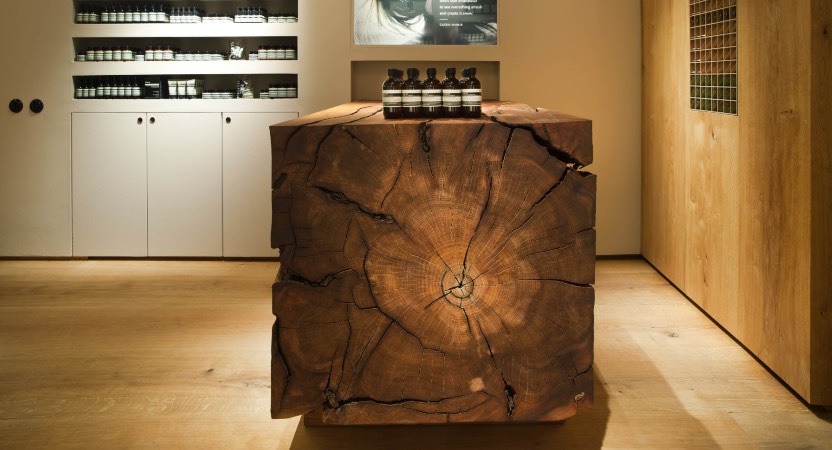
Aesop: Luxury skincare with a focus on simplicity and quality
- Australian skincare brand Aesop differentiates itself through its minimalist product design, premium ingredients, and emphasis on quality.
- The brand’s distinct packaging and dedication to simplicity have made it easily recognisable and coveted by consumers.
- Aesop’s commitment to using botanical extracts and natural ingredients in their formulations has attracted health-conscious consumers seeking high-end skincare products with proven efficacy.
- By focusing on quality, design, and a unique brand aesthetic, Aesop has established itself as a leader in the luxury skincare market.
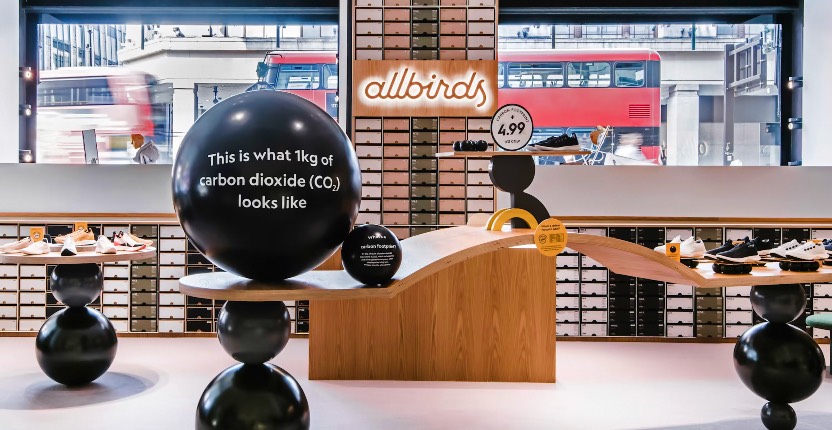
Allbirds: Sustainable footwear with merino wool and recycled materials
- New Zealand footwear brand Allbirds has successfully differentiated itself through its sustainable materials and commitment to reducing its carbon footprint.
- The brand’s use of merino wool, eucalyptus fibre, and recycled plastic bottles in their shoe production sets them apart in the footwear industry.
- Allbirds combines comfort, style, and sustainability, appealing to environmentally conscious consumers who seek eco-friendly options.
- By highlighting their innovative materials and sustainable practices, Allbirds has captured attention both locally and globally, becoming a prominent player in the footwear market.

Icebreaker: Merino wool outdoor apparel with a focus on sustainability
- New Zealand company Icebreaker differentiates itself by producing high-performance outdoor apparel made from merino wool.
- The brand’s commitment to sustainability is evident throughout their supply chain, from ethically sourced merino wool to transparent production processes.
- Icebreaker’s use of natural, renewable, and biodegradable materials resonates with environmentally conscious consumers who value sustainable fashion.
- The brand’s focus on quality, performance, and sustainability has allowed Icebreaker to successfully establish a niche in the outdoor apparel industry.
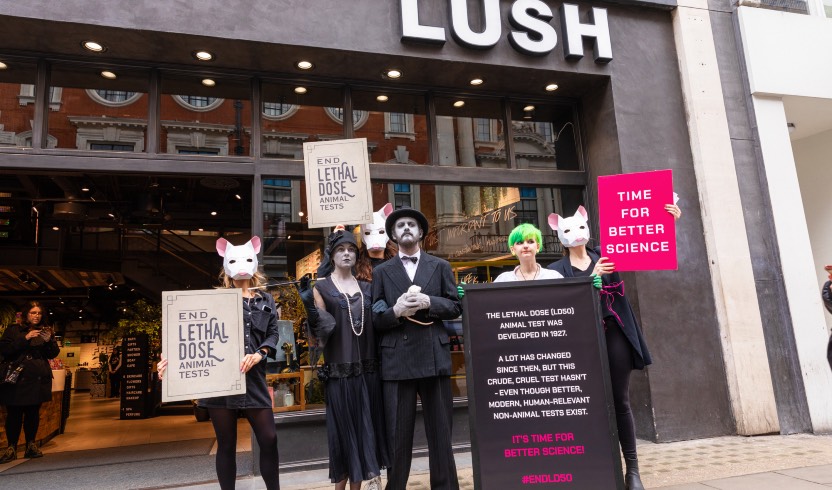
Lush: Handmade cosmetics with a focus on ethical sourcing and activism
- Australian cosmetics company Lush differentiates itself through its handmade products, ethical sourcing, and activism.
- The brand’s commitment to using fresh, organic ingredients and avoiding animal testing has garnered a dedicated following of environmentally conscious consumers.
- Lush also actively engages in campaigns and supports various social and environmental causes, showcasing its commitment to activism and social responsibility.
- By combining high-quality products with a strong ethical stance, Lush has created a unique and impactful brand identity in the cosmetics industry.
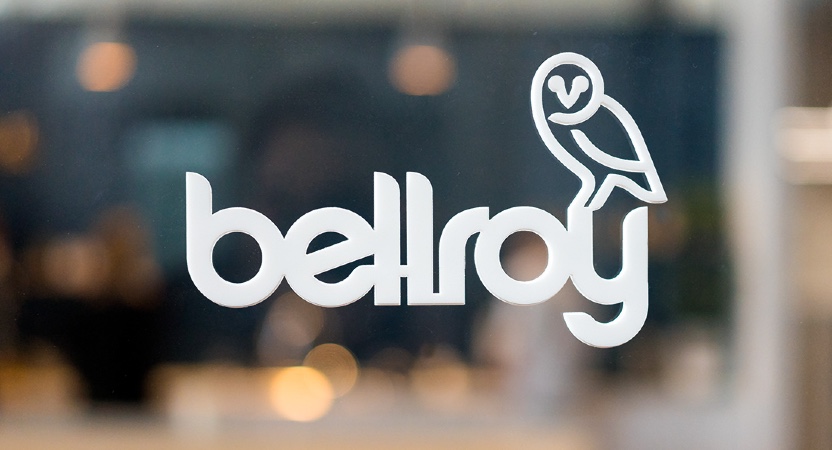
Bellroy: Innovative, slim-profile wallets and accessories
- Australian company Bellroy differentiates itself by offering innovative, slim-profile wallets and accessories.
- The brand’s focus on minimalism and functional design has attracted consumers seeking stylish yet practical solutions.
- Bellroy’s use of high-quality materials, thoughtful organisation, and attention to detail sets them apart from traditional bulky wallets.
- Their commitment to sustainability and responsible manufacturing further enhances their brand appeal.
- Through their dedication to innovative design and functional simplicity, Bellroy has successfully carved out a niche in the wallets and accessories market.
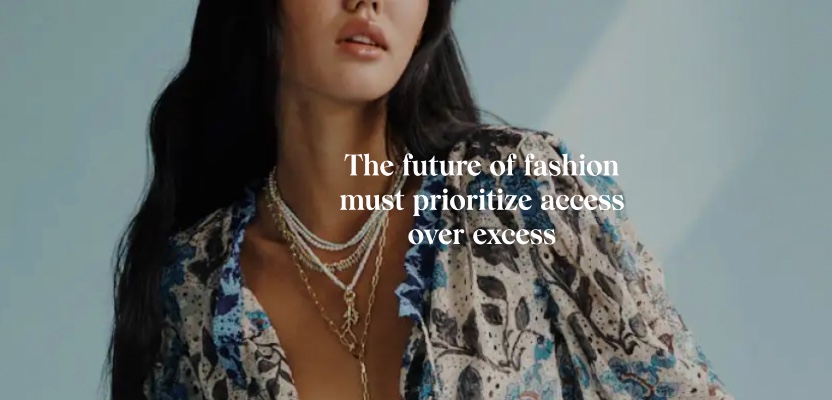
Rent the Runway: Fashion rental service for special occasions
- American e-commerce platform Rent the Runway differentiates itself by offering a fashion rental service for special occasions.
- By providing access to designer clothing and accessories at a fraction of the retail price, Rent the Runway appeals to customers seeking luxury and variety without the high cost of ownership.
- Their platform allows customers to rent high-end fashion items for a specific event and return them afterward.
- By offering a unique and sustainable alternative to buying expensive formal wear, Rent the Runway disrupted the fashion industry and created a new market segment.
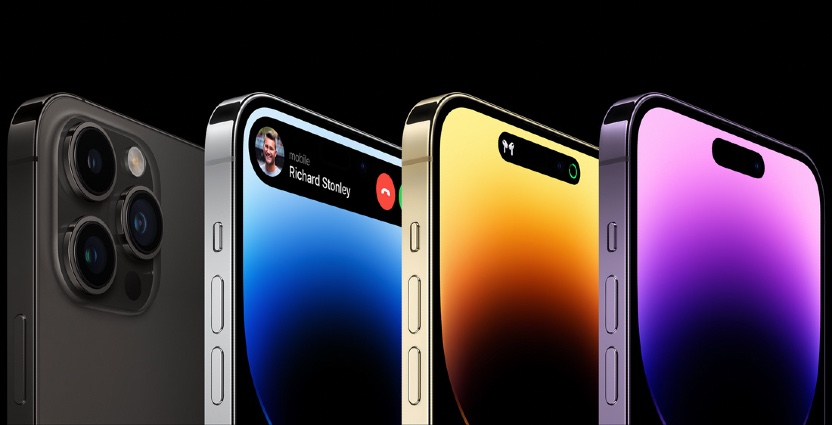
Apple: The art of innovation and design
- Apple is a prime example of successful differentiation through innovation and design.
- From its iconic products like the iMac, iPhone, iPad, and MacBook to its user-friendly software and sleek aesthetics, Apple has consistently pushed the boundaries of technology and set new standards in the industry.
- By focusing on creating seamless integration between hardware and software, Apple has established a unique ecosystem that enhances the user experience.
- Its emphasis on design excellence, attention to detail, and intuitive interfaces have captured the hearts of consumers, creating a strong emotional connection to the brand.

Tesla: Revolutionising the automotive industry
- Tesla has revolutionised the automotive industry through its differentiation strategy focused on electric vehicles and sustainable energy solutions.
- By challenging the traditional notion of cars and embracing clean energy, Tesla has positioned itself as a pioneer in the market.
- The company’s commitment to cutting-edge technology, superior performance, and sleek design has attracted a loyal following.
- Tesla’s ability to continuously innovate, improve battery technology, and expand its charging infrastructure has further solidified its market position, making it the leading electric vehicle manufacturer globally.
These case studies illustrate the power of brand differentiation in creating a competitive advantage and establishing a strong market position.
From luxury skincare and sustainable footwear to beautifully-designed electronic devices and disruptive electric vehicles, these brands demonstrate how differentiation can lead to remarkable success.
These brands have not only differentiated themselves from their competitors but have also created meaningful connections with consumers, fostering loyalty and long-term growth.
By studying these examples, you can gain insights and inspiration for your own differentiation strategy and create a unique value proposition that resonates with your target audience.

TLDR
Legendary marketing experts Al Ries and Jack Trout stated…
“Positioning is not about the product or service itself, but what exists in the mind of the prospect. Building a distinctive position requires creativity and strategic thinking.”
Brands must create meaningful differentiation to gain valuable mindshare. Your brand doesn’t stick in someone’s mind because it’s a little bit better on some attributes. It sticks because it stands out.
Adopting a “me too” strategy does not give you the other brand’s success without the cost. If you go down that route you’re playing on their terms, attacking them where they’re strong.
Playing on your own terms changes the game. “Worse, but different,” is in fact “better”. Even better than “different,” is to be extreme in that difference. Not just great design, for example, but so remarkable that it’s written up on designer’s blogs and people buy it only for its design.
Choose one thing and work your butt off to be radically different in that one thing.
Differentiation is crucial for any brand seeking sustainable growth and longevity. The dangers of becoming a “me too” brand are substantial, from the erosion of brand identity to vulnerability against disruptors.
By taking the time to establish a unique value proposition, innovate, and build authentic connections with customers, brands can thrive amidst competition.
As illustrated by the case studies, differentiation enables companies to carve out a distinct niche, foster deep loyalty, command premium pricing, and continually expand into new markets.
The path to brand differentiation requires a willingness to take calculated risks, challenge conventions, and stay attuned to evolving consumer needs. Companies that leverage their distinctive attributes and consistently reinforce their differentiation strategy are best-positioned for the future.
As marketing expert Seth Godin wrote in Purple Cow: Transform Your Business by Being Remarkable…
“If you want to stand out in a crowded marketplace, you have no choice but to be remarkable. Play it safe, be dull, or fit in too well, and you’ll fail to get noticed.’ Brands today need to embrace differentiation to truly thrive.”
Rather than playing catch-up, set your brand apart. Be bold, be different, and most importantly, be yourself. This is the key to capturing attention, hearts and market share.
“Be yourself. Everyone else is taken.”
– Oscar Wilde


